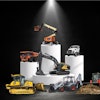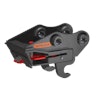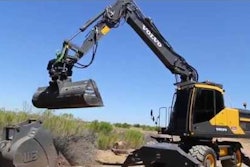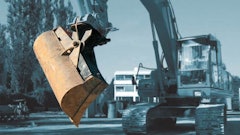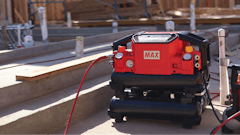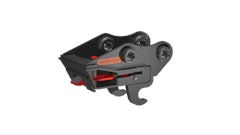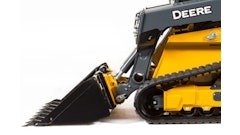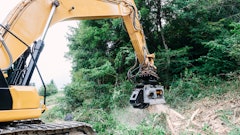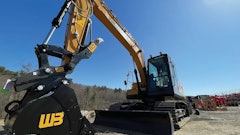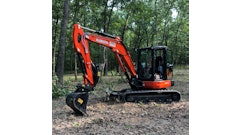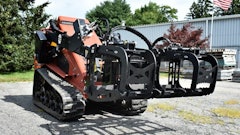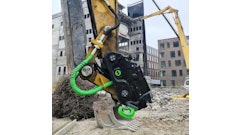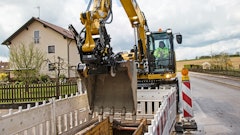
Improper use of demolition tools is a common cause of failure. Operators are more likely to choose the correct tool for the job if the carrier is equipped with an automatic quick coupler.
“We do see the trend where the demolition contractor goes with a fully automatic quick coupler because it makes more sense in their day to day to be changing from a shear, pulverizer, grapple and then back to the bucket,” says Christian Yanes, vice president, region Americas at Steelwrist Inc.
The demand for automatic quick couplers in the demolition environment is due to the nature of the attachments. “The tools get bigger and the hoses are not in the face of the person who is trying to change it,” explains Yanes. “So, safety definitely becomes a bigger issue when it comes to demolition tools because the tools are bigger, the pressures that the machines or the hydraulic tools are working with are higher. More things can go wrong.” With the automatic quick coupler, the operator can stay in the cab and no one is required to be on the ground to perform the switch.
SteelWrist offers an SQ coupler that automatically connects the hydraulic fittings. “The SQ makes the machine more efficient, allowing the demolition contractor to use the right tool for the right job.” Contractors can quickly change attachments versus mistreating or misusing a tool that's not meant for a specific job just because it takes 10, 15 or 20 minutes to change the tool.
The automatic quick couplers, such as the SQ, can adapt to many different attachment plumbing requirements. “Some tools have to two couplings. The hydraulic breaker uses a pressure and a return,”explains Yanes. There may be other couplings on the machine that are not connected to anything. “In that scenario, the tool will have dummies that will still connect to the ports that are not being used so that there is no debris or dust getting into and contaminating them,” says Yanes.
For instance, a machine may have two sets of auxiliaries that include two pressures, two returns, and a case drain. “We're talking a total of at least five couplings that are connected hydraulically,” explains Yanes. “If I connect a rotating grapple, I'm able to rotate that grapple with one pressure and one return. I'm able to open and close the jaw. Had that tool required a case drain, it would also be connected to the machine. When I drop the grapple and connect the hydraulic breaker, I go from using potentially five couplings to only using two because a breaker only needs one pressure on one return. The other couplings that are not being used are protected by these dummies in the bracket so that they're sealed and they're not getting any contamination.”
These couplers also offer better reliability due to the hose routings. “Another benefit you see with the people who adapt the technology is that the hoses are routed so that they go from the tool straight up towards the bracket,” says Yanes. “The hoses don't need to be that long. Normally the hose has to be long enough so that it goes from the tool all the way up to the stick and the machine, which means that when dropping the tool, a lot of these hoses get damaged.”
The fully automatic quick coupler, commonly known as the wet coupler, has been around since the nineties. It is a proven technology, though relatively new to the US. When making the decision to convert, most commonly all excavators and tools need to be converted otherwise you would face compatibility issues. If you have three excavators and two hydraulic breakers and only convert one excavator to a fully automatic quick coupler and only convert one of your breakers, you limit the ability to swap machines and attachments. The excavator with the fully automatic quick coupler is only compatible with the breaker that is also equipped with the fully automatic quick coupler.
The challenge has been that if you purchase one brand of quick coupler, every machine in your fleet had to be adapted to that quick coupler. “It's a larger investment because you're not doing a coupler at a time,” explains Yanes. “
Compatibility between different brands of automatic quick couplers is currently being addressed with a universal standard which is called Open-S. It promises to make several automatic quick couplers compatible with each other and address any potential compatibility issues (www.OpenS.org).


